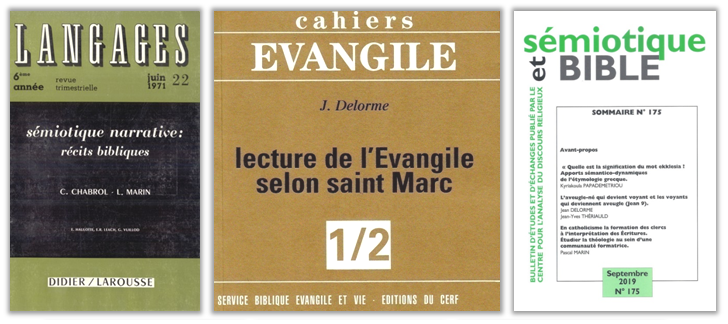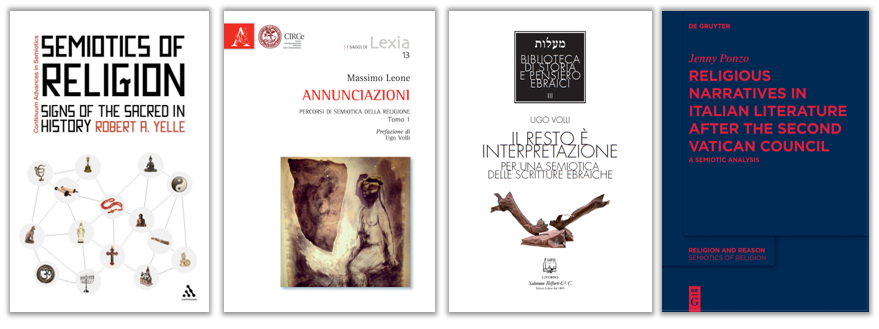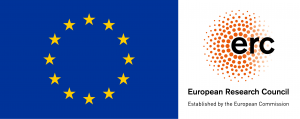Semiotics of Religion

The semiotics of religion was born within the French milieu in the 1970s, as a filiation, on the one hand, of literary semiotics (narratology and the work on narrativity carried out by the Paris School gathered around Algirdas J. Greimas) and, on the other, of anthropological, ethnological and mythographic studies (particularly, the work of Claude Lévi-Strauss and Georges Dumézil).
It is an extremely specialized and minority area both within semiotic and religious studies, but it is also very prolific; its advancements can be traced and monitored through two historic periodical publications:
- “Cahiers Evangile”, whose first issue dates back to 1972 and which, in January 2020, has come to the 190th issue.
- “Sémiotique et Bible”, a journal curated by the CADIR – Center for the Analysis of Religious Discourse (Center pour l’Analyse du Discours Religieux, created within the Catholic University of Lyon), whose first issue dates back to 1975 and which, in December 2019, has come to the 176th issue.
Important, for their foundational and methodological value, within the structuralist epistemology:
- C. Chabrol, L. Marin (Eds.), “Langages”, 6, 22 (Sémiotique Narrative: Récits Bibliques), 1971.
- R. Barthes, F. Bovon, F.J. Leenhardt, R. Martin-Achard, J. Starobinski, Analyse structurale et exégèse biblique, Essais d’interprétation, Delachaux & Niestlé, Neuchâtel, 1972.
- The text of the seminal essay by Barthes (“La lutte avec l’ange : analyse textuelle de Genèse 32, 23-33”) is available on the website of the University of Geneva.
- D. Patte (Ed.) Semiology and Parables. Exploration of the Possibilities Offered by Structuralism for Exegesis, The Pickwick Press, Pittsburgh PA, 1976.
- Groupe d’Entrevernes (Ed.), Signes et Paraboles: Sémiotique et Texte Évangélique, Editions du Seuil, Paris, 1977.
- “Actes sémiotiques – Bulletin du Groupe de Recherches Sémio-Linguistiques”, Vol. II, N. 8 (avril), Sémiotique du domaine religieux, 1979.
- J. Delorme, P. Geoltrain, “Le discours religieux”, in J.C. Coquet (Ed.), Sémiotique. L’école de Paris, Hachette, Paris, 1982, pp. 103-126.
- D.C. Greenwood, Structuralism and the Biblical Text, Mouton, Berlin-Amsterdam-New York, 1985.
- J. Delorme, “Sémiotique”, in J. Briend, E. Conthenet (Eds.), Dictionnaire de la Bible – Supplément Vol. 12, Letouzey & Ané, Paris, 1992, pp. 281-333.
- B.S. Jackson, Studies in the Semiotics of Biblical Law, Sheffield University Press, Sheffield, 2000.

Another approach to the semiotics of religion comes from visual and art semiotics; this is a fertile field of study (especially in Italy; e.g. Massimo Leone, Andrea Catellani [Lo sguardo e la parola. Saggio di analisi della letteratura spirituale illustrata, Franco Cesati, Firenze, 2010], Ruggero Ragonese [Farsi Spazio: San Michele medievale fra immagine e architettura, FrancoAngeli, Milano, 2015.]), pioneered by:
- A. Appiano Caprettini, Lettura dell’Annunciazione: tra semiotica e iconografia, Giappichelli, Torino, 1979.
Nevertheless, semiotics tends not to distinguish between texts, works of art, and practices, as regards their efficacy, so that it analyzes them all in the respect of being the different manifestations of a whole discourse and a model produced by a given culture; this approach is exemplified by the works by Massimo Leone, which examine hagiographies, paitings, and other materials, such as:
- M. Leone, Religious Conversion and Identity. The Semiotic Analysis of Texts, Routledge, New York-London, 2004.
- M. Leone, Saints and Signs. A Semiotic Reading of Conversion in Early Modern Catholicism, Walter de Gruyter, Berlin-New York, 2010.
For a general overview of the application of semiotic tools to the study of religion:
- J.C. Giroud, L. Panier, Sémiotique du discours religieux, in “Revue des Sciences Humaines”, Université de Lille III, N. 201, 1986, pp. 119-128.
- W. Nöth, “Theology”, in Id., Handbook of Semiotics, Indiana University Press, Bloomington (IN), 1990, pp. 381-384.
- R. Yelle, Semiotic Approaches to Religion, in “Semiotix” XN-1, 2010, https://semioticon.com/semiotix/2010/03/semiotic-approaches-to-religion/.
- R. Yelle, “Semiotics beyond structuralism”, in Id., Semiotics of Religion. Signs of the Sacred in History, Bloomsbury, London-New York, 2012, pp. 1-22.
- R. Yelle, “Semiotics”, in M. Stausberg, S. Engler (Eds.), The Oxford Handbook of the Study of Religion, Oxford University Press, Oxford UK, 2016, pp. 208-219.
- J. Kreinath, “Semiotics”, in R.A. Segal, K. Von Stuckrad (Eds.), Vocabulary for the Study of Religion, Brill, Leiden, 2016, DOI: 10.1163/9789004249707_vsr_COM_00000098.
- M. Leone, “Religious conversion and semiotic analysis”, in L.R. Rambo, C.E. Farhadian (Eds.), The Oxford Handbook of Religious Conversion, Oxford University Press, Oxford NY, 2014, pp. 369-400.
- M. Leone, “Sémiotique de la religion : histoire, méthode, et perspectives”, in J.-D. Dubois, R. Koch Piettre, V. Zuber (Eds.), Les Sciences des religions, EPHE, Paris, 2016, pp. 7-17.
- M. Leone, “Sémiotique et sciences des religions”, in A. Biglari (Ed.), La sémiotique en interface, Editions Kimé, Paris, 2018, pp. 307-321.
- M. Leone, Semiotics of Religion: A Map, in “The American Journal of Semiotics”, 3 January 2020, DOI: 10.5840/ajs20201258.
Along with Fabio Rambelli, Massimo Leone and Robert Yelle are the curators of the “Semiotics of Religion“ series published by De Gruyter (which, as of February 2020, includes monographs by Tatsuma Padoan, Jenny Ponzo, and Remo Gramigna).
Some important references for the Italian area:
- N. Dusi, G. Marrone (Eds.), Destini del sacro. Discorso religioso e semiotica della cultura, Meltemi, Roma, 2008.
- M. Leone, Annunciazioni. Percorsi di semiotica della religione, Aracne, Roma, 2014, 2 vols.
- M. Leone (Ed.), “Lexia” 11-12 (Culto/Worship), 2015.
- J. Ponzo, Religious Narratives in Italian Literature after the Second Vatican Council: A Semiotic Analysis, De Gruyter, Berlin-Boston, 2019.
- U. Volli, Il resto è interpretazione. Per una semiotica delle scritture ebraiche, Belforte Salomone, Livorno, 2019.


